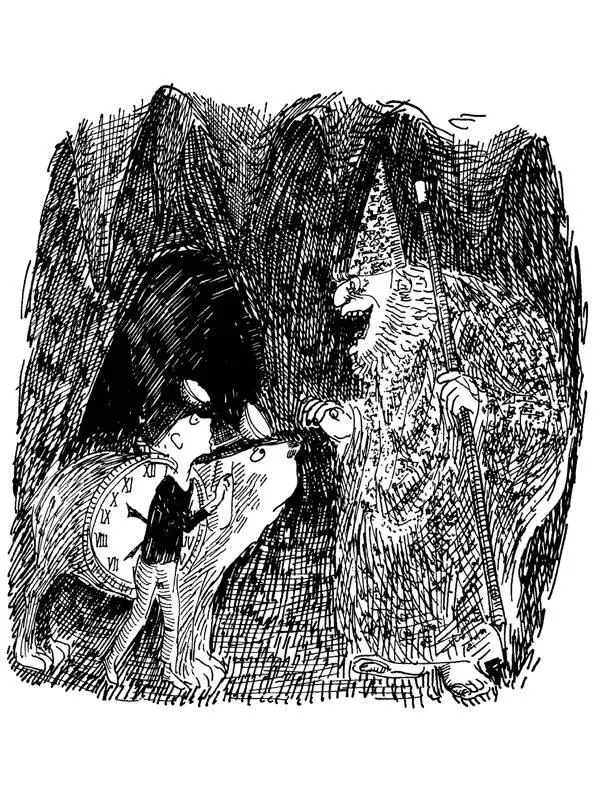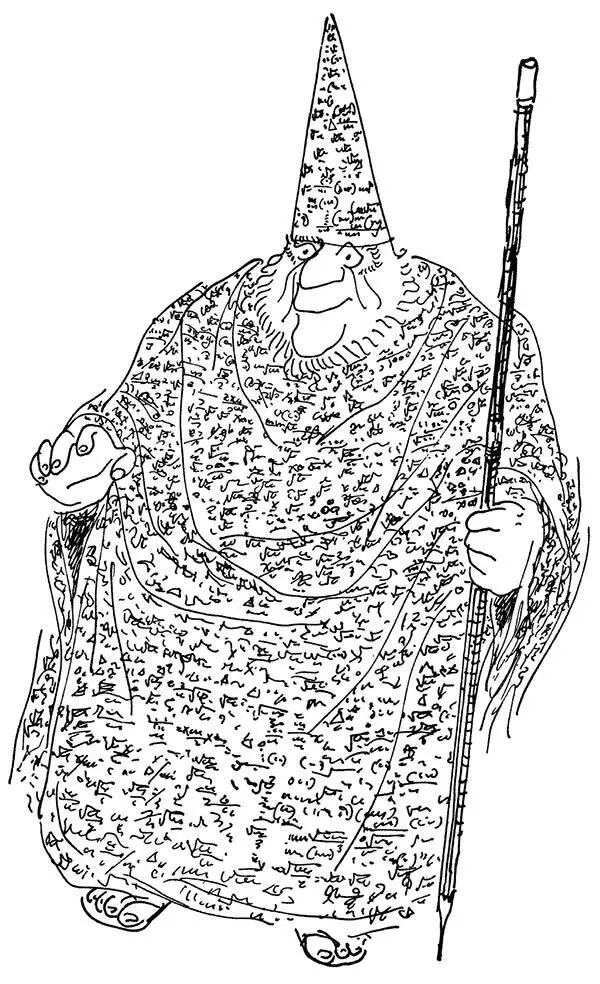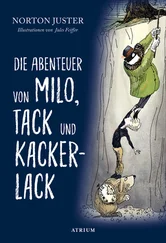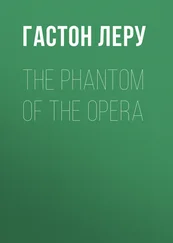“But that’s a five,” objected Milo, for that was certainly what it was.
“Exactly,” agreed the Mathemagician; “as valuable a jewel as you’ll find anywhere. Look at some of the others.”
He scooped up a great handful of stones and poured them into Milo’s arms. They included all the numbers from one to nine, and even an assortment of zeros.
“We dig them and polish them right here,” volunteered the Dodecahedron, pointing to a group of workers busily employed at the buffing wheels; “and then we send them all over the world. Marvelous, aren’t they?”
“They are exceptional,” said Tock, who had a special fondness for numbers.
“So that’s where they come from,” said Milo, looking in awe at the glittering collection of numbers. He returned them to the Dodecahedron as carefully as possible but, as he did, one dropped to the floor with a smash and broke in two. The Humbug winced and Milo looked terribly concerned.
“Oh, don’t worry about that,” said the Mathemagician as he scooped up the pieces. “We use the broken ones for fractions.”
“Haven’t you any diamonds or emeralds or rubies?” asked the bug irritably, for he was quite disappointed in what he’d seen so far.

“Yes, indeed,” the Mathemagician replied, leading them to the rear of the cave; “right this way.”
There, piled into enormous mounds that reached almost to the ceiling, were not only diamonds and emeralds and rubies but also sapphires, amethysts, topazes, moonstones, and garnets. It was the most amazing mass of wealth that any of them had ever seen.
“They’re such a terrible nuisance,” sighed the Mathemagician, “and no one can think of what to do with them. So we just keep digging them up and throwing them out. Now,” he said, taking a silver whistle from his pocket and blowing it loudly, “let’s have some lunch.”
And for the first time in his life the astonished bug couldn’t think of a thing to say.

Into the cavern rushed eight of the strongest miners carrying an immense caldron which bubbled and sizzled and sent great clouds of savory steam spiraling slowly to the ceiling. A sweet yet pungent aroma hung in the air and drifted easily from one anxious nose to the other, stopping only long enough to make several mouths water and a few stomachs growl. Milo, Tock, and the Humbug watched eagerly as the rest of the workers put down their tools and gathered around the big pot to help themselves.
“Perhaps you’d care for something to eat?” said the Mathemagician, offering each of them a heaping bowlful.
“Yes, sir,” said Milo, who was beside himself with hunger.
“Thank you,” added Tock.
The Humbug made no reply, for he was already too busy eating, and in a moment the three of them had finished absolutely everything they’d been given.
“Please have another portion,” said the Mathemagician, filling their bowls once more; and as quickly as they’d finished the first one the second was emptied, too.
“Don’t stop now,” he insisted, serving them again,
and again,
and again,
and again,
and again,
“How very strange,” thought Milo as he finished his seventh helping. “Each one I eat makes me a little hungrier than the one before.”
“Do have some more,” suggested the Mathemagician, and they continued to eat just as fast as he filled the plates.
After Milo had eaten nine portions, Tock eleven, and the Humbug, without once stopping to look up, twenty-three, the Mathemagician blew his whistle for a second time and immediately the pot was removed and the miners returned to work.
“U-g-g-g-h-h-h,” gasped the bug, suddenly realizing that he was twenty-three times hungrier than when he started, “I think I’m starving.”
“Me, too,” complained Milo, whose stomach felt as empty as he could ever remember; “and I ate so much.”
“Yes, it was delicious, wasn’t it?” agreed the pleased Dodecahedron, wiping the gravy from several of his mouths. “It’s the specialty of the kingdom—subtraction stew.”
“I have more of an appetite than when I began,” said Tock, leaning weakly against one of the larger rocks.
“Certainly,” replied the Mathemagician; “what did you expect? The more you eat, the hungrier you get. Everyone knows that.”
“They do?” said Milo doubtfully. “Then how do you ever get enough?”
“Enough?” he said impatiently. “Here in Digitopolis we have our meals when we’re full and eat until we’re hungry. That way, when you don’t have anything at all, you have more than enough. It’s a very economical system. You must have been quite stuffed to have eaten so much.”
“It’s completely logical,” explained the Dodecahedron. “The more you want, the less you get, and the less you get, the more you have. Simple arithmetic, that’s all. Suppose you had something and added something to it. What would that make?”
“More,” said Milo quickly.
“Quite correct,” he nodded. “Now suppose you had something and added nothing to it. What would you have?”
“The same,” he answered again, without much conviction.
“Splendid,” cried the Dodecahedron. “And suppose you had something and added less than nothing to it. What would you have then?”
“FAMINE!” roared the anguished Humbug, who suddenly realized that that was exactly what he’d eaten twenty-three bowls of.
“It’s not as bad as all that,” said the Dodecahedron from his most sympathetic face. “In a few hours you’ll be nice and full again—just in time for dinner.”
“Oh dear,” said Milo sadly and softly. “I only eat when I’m hungry.”
“What a curious idea,” said the Mathemagician, raising his staff over his head and scrubbing the rubber end back and forth several times on the ceiling. “The next thing you’ll have us believe is that you only sleep when you’re tired.” And by the time he’d finished the sentence, the cavern, the miners, and the Dodecahedron had vanished, leaving just the four of them standing in the Mathemagician’s workshop.
“I often find,” he casually explained to his dazed visitors, “that the best way to get from one place to another is to erase everything and begin again. Please make yourself at home.”
“Do you always travel that way?” asked Milo as he glanced curiously at the strange circular room, whose sixteen tiny arched windows corresponded exactly to the sixteen points of the compass. Around the entire circumference were numbers from zero to three hundred and sixty, marking the degrees of the circle, and on the floor, walls, tables, chairs, desks, cabinets, and ceiling were labels showing their heights, widths, depths, and distances to and from each other. To one side was a gigantic note pad set on an artist’s easel, and from hooks and strings hung a collection of scales, rulers, measures, weights, tapes, and all sorts of other devices for measuring any number of things in every possible way.
“No indeed,” replied the Mathemagician, and this time he raised the sharpened end of his staff, drew a thin straight line in the air, and then walked gracefully across it from one side of the room to the other. “Most of the time I take the shortest distance between any two points. And, of course, when I should be in several places at once,” he remarked, writing 7 × 1 = 7 carefully on the note pad, “I simply multiply.”
Читать дальше














